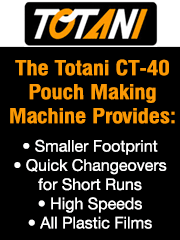Let's All Get Together Now
- Published: September 01, 2007, By By David Argent, Contributing Editor
Process Management
The more things change, the more they stay the same. Consider this: “I propose to explore, what is to me a most vital subject, the industry problems in terms of the converter/buyer relationship. Today the flexographic industry finds itself in a very unusual position. The converter is caught in the crossfire of rising costs, decreasing prices, increasing volume, and decreasing profits. What factors contributed to plunging the industry into this economic quicksand? The reasons heard vary from the cry that the competition is too tough to the mournful wail that the buyers are unreasonable, etc.”
These words were delivered at a luncheon meeting by C. Wayne Barlow, buyer for Sears, and published in the Report of the Proceedings of the First Annual Meeting and Technical Forum, Flexographic Technical Assn., Feb. 5–6, 1959, Hotel Biltmore, New York.
Barlow went on to berate both converters and buyers for not working closely together to form mutually effective partnerships, and even after all these years these comments still hit home. So, how do we work together, for what purposes, and are our efforts adding value?
We communicate and run our businesses through meetings, and there are innumerable courses and instructions on how to conduct a meeting in terms of preparation, group dynamics, meeting control skills, and post-meeting activities. Assuming these skills are in place, a simple, proven framework can be applied for effective supplier-customer meetings, that are process and data driven.
This meeting would be directed by the consumer products company. The goals are specified and understood, and where possible, reduced to numeric targets and specific milestones.
A consumer products company may be concerned about low compliance to a corporate color standard. Participants in these meetings, in addition to the converter, might be ink, graphics, and substrate vendors.
This is the critical meeting in that it directs all of the succeeding activities and is repeated at a frequency that keeps the initiative on schedule. It can be broken down into four broad categories:
- Team Activities and Implementation
Various companies, having attended the management meeting, now would be required to work together in support of goals laid out by the consumer products company. This means time and resources have to be allocated and responsibilities defined. - Project Management
Projects are assigned to achieve goals laid down at the meeting. For color compliance, a project might include evaluation of measurement devices and establishment of standards. - Performance Measures
Performance measures tell us whether the projects are moving the system toward the stated goal. In the realm of color reporting, a measure could include the tracking of the rate of improvement of conformance to a standard. - Corrective Actions
A procedure must be in place to track nonconformances that detract from the overall goals and to fix these problems permanently. Obviously, there are many ways of managing a converter/consumer company relationship. For the best results, it would seem to make sense to have an agreed framework to help navigate the major issues at the management level and that the activities generated actually are adding value.

David Argent has 30+ years of experience in the converting industry. He specializes in process analysis and improvement with particular emphasis on ink and coating design and performance. Contact him at 636/391-8180; djvargent@sbcglobal.net.













